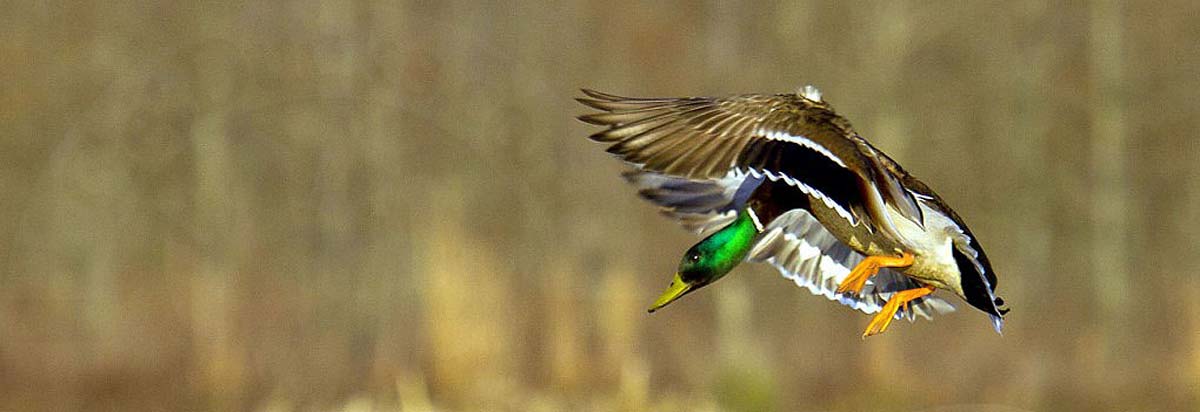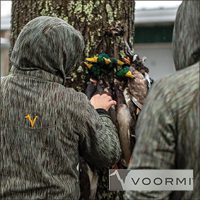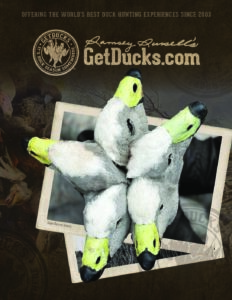Ring-necked Duck
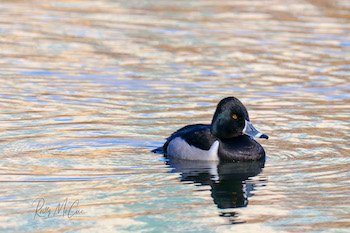
Ring-necked Duck (Aythya collaris) derives its namesake from the adult drake’s inconspicuous darkly tarnished copper colored ring separating the black plumage of the head and neck that can only be seen in hand. Blackjack is a common nickname in southern portions of the US. Other ring-necked duck features include their peaked forehead and uniquely colored blue bill, ringed with white and tipped with black. Drake ring-necked ducks display yellow irises and black head plumage with purple iridescence. Drakes display polished black feathers on their chest, back, and to the tail. The underbelly of both sexes is white. While the drake’s side-pockets are vermiculated gray and the sides of the hen are vermiculated brown. The white underbelly curls around the breastbone into the stark black chest, forming a white “nike swoosh stripe” appearance while ring-necked ducks are swimming. Dark upper wings and muted gray secondaries. In flight, an absence of white on their wings differentiates them at a glance from scaup, and if any diver descends as abruptly into the decoys with such tell-tale thunderous sounds of wings ripping air, I’ve not yet heard it!
Available Hunts
-
Louisiana Duck Hunting – Coastal Marsh at Venice
Never more than 3 steps away from the duck blind - Inclusive package for individuals, families, and corporate groups that want to cast or blast (or cast and blast) while living it up like cajun kings.
...read more- Coastal Louisiana duck hunting, inshore or offshore fishing, perfect Cast & Blast
- Premium lodging and excellent chef-prepared meals featuring regional specialties
- Spacious lodge sleeps up to 18
- Accepts booking 1-18+ (no mixed groups)
- Excellent early blue-winged teal hunting (September), regular duck season November-January)
- Plus inshore and offshore fishing
Rate: $500/day -
Manitoba Canada Duck and Goose Hunting
Birdtail Waterfowl has perfected the Manitoba Canada waterfowl hunting experience for ducks and geese. Highly organized, everything runs like clockwork.
...read more- Best total-package waterfowl hunt in Manitoba Canada. Period.
- Extremely large and productive hunting area, diverse habitats
- Mallards, pintails, Canada geese, cackling geese, snow geese, white-fronted geese, sandhill cranes–and unbelievably great diver hunts for those that choose
- Chef-prepared meals, private cottages, excellent attention to details
- Youth hunter discounts, non-hunting spouses welcomed
- September through early-November
Rate: $2,900-3900 -
Mexico Duck Hunting Obregon
Mexico duck hunt combo for real duck hunters. All-day hunts for broad variety of Central Flyway and Pacific Flyway duck species.
...read moreMexico duck hunting combo in Obregon is an action-packed “real duck hunters duck hunt” for ducks, doves, options for trophy bass fishing and quail.
- Trophy duck species for nearly all Central and Pacific flyway species to include cinnamon teal, Mexican mallard, more!
- Generous bag limits
- Elegant and Gambel’s quail, trophy largemouth bass fishing options
- Premium, 9-bedroom estancia and unequalled guest services
- Featured – Wildfowl, World of Beretta, MOJO TV, Outdoor Life, NRA Hunter, more
Rate: $4,880 (4-day hunt) -
Texas Waterfowl Hunt – Desert Paradise
Texas waterfowl hunt packages features relatively unpressured ducks, geese and sandhill cranes in an area so large it takes 3 lodges to cover and so ecologically diverse that most Central Flyway waterfowl species can be hunted!
...read more- Inclusive Texas waterfowl hunting packages for ducks, geese, sandhill cranes, doves, early blue-winged teal, spring turkeys, more.
- 3 lodges to cover vast, relatively undisturbed waterfowl hunting area and to offer flexibility for desired bucket-list species, amenity-level needs, or personal budget
- Central flyway puddle ducks to include prized mottled duck, Mexican duck, cinnamon teal, fulvous whistling duck, black-bellied whistling duck opportunities all right here in USA
- Sandhill crane hunting and white-fronted goose hunting are the Speck Ops Waterfowl house specialties
- Luxurious lodging with over-the-top and fun activities provide fun for bachelor or business hunting groups, entire families and non-hunters,
Rate: $2,000 to $2,900
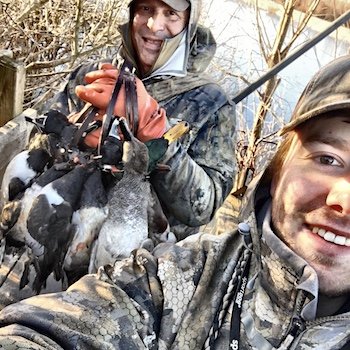
Ring-necked duck nests are either built above the water, on floating vegetation, or directly land near water. This species prefers to be on the water to protect their young, either in eggs or hatched, from terrestrial predators. Breeding grounds are found in Alaska, most of Canada, and the northern half of the United States, with highest breeding concentration can be seen in the Saskatchewan River and Athabasca River deltas.
Massive ring-necked duck flocks can be found eating wild rice in lakes in Minnesota during migration. While their diet is predominantly any plant parts of millet, sedges, rice, and water lilies, they will also feed on mollusks, leeches, midges, and earthworms. The wintering region for the Ring-necked Duck ranges almost the entire United States and Mexico, except North and South Dakota, Minnesota, Montana, and most of Kansas. Frequent areas for this species are on the border of Texas and Louisiana, northeastern Arkansas, Tennessee, Washington, Florida, and along the East Coast. Looks for this species in a variety of habitats to include rice fields, marsh, cypress brakes and shrub-scrub sloughs, anywhere with water depth knee-deep or more and submerged aquatic plant material.

